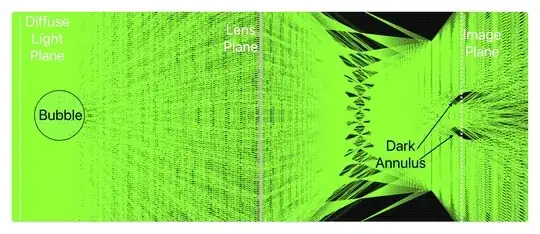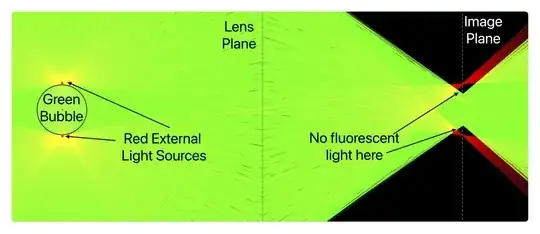The larger, dark outer shell is not indicative of the bubble size. However, the inner circle is.
It looks like the far left image is: (1) the fluorescent only channel, middle image: (2) brightfield, and right image: (3) fluorescent and brightfield.
It appears that in (1) the entire drop has a well-defined boundary/edge which corresponds to the drop-oil interface.
In (2) we now see a dark fringe around the drop which is larger than the boundary in (1). This dark ring is not a physical boundary, but is an artifact, primarily due to the fact that there is a refractive index mismatch$^1$ (with some possible diffraction), which causes the exaggerated edge and making the bubble look larger than it actually is.
In (3) we see the fluorescent boundary lies inside the dark ring in (2) and is of exact size compared to (1), thus confirming that the bubble (outer) edge in (2) is exaggerated.
Or simply put, the actual drop is the fluorescent image in (1) and the fluorescent image region of (3) which show the same physical drop.
$^1$ The bubble core/protein solution has a higher refractive index than the surrounding oil (you have also stated there's a surfactant you added, but these are typically thin enough not to cause significant refraction or total internal reflection). This means at the interface between bubble and oil, there is strong refraction. Also note that a quick google search shows that these oils are typically low refractive index fluorinated hydrocarbons with $n\approx 1.29$ - c.f., protein solution $\approx 1.33$.



